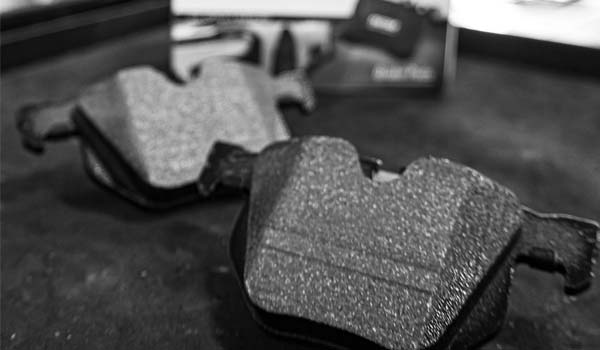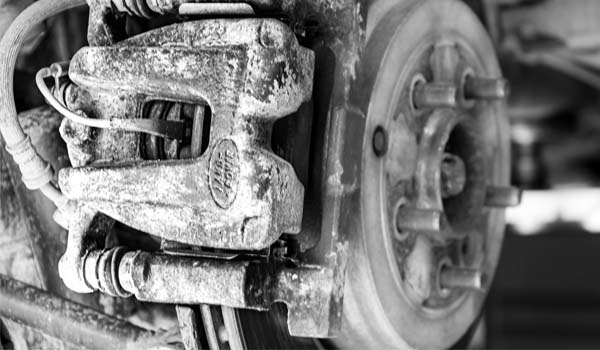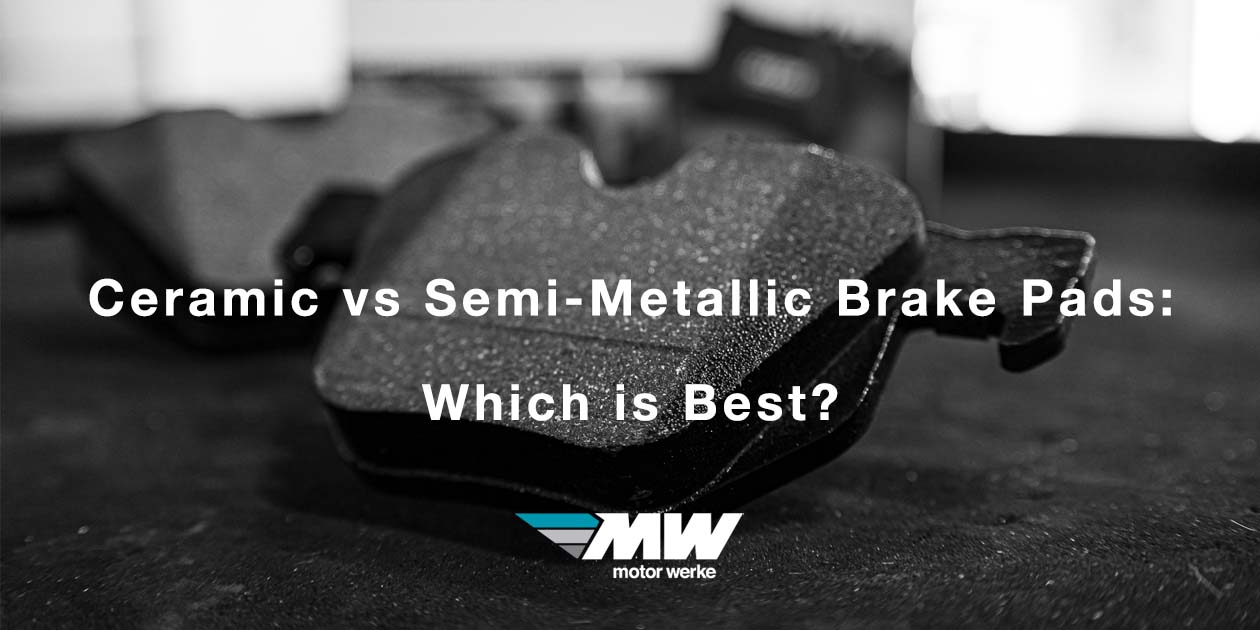Ceramic vs. Semi-Metallic Brake Pads: Which is best?
Perhaps the least exciting but most important aspect of any car, truck, or SUV is not how well it gets going, but how well it can stop. Everyone always wants to know the horsepower rating, the 0-60 times, the payload or towing capacity, all the exciting numbers. None of this matters if the brakes aren’t good. That is until they begin to wear out and they do start singing their awful high-pitched screams. When you hear that telltale noise you know it’s time to have them replaced, but the question is do you go with a Ceramic or Semi-Metallic?
These two formulas have been tossed around for ages, but a clear winner has never emerged. The answer is quite simple: There isn’t one. Both pads have their own set of strengths and weaknesses, and it’s important to know what those are when selecting your next set of brakes. They’re both going to stop the car when you press the pedal, but how they behave and what their long-term effects look like is where they start to differ.

Semi-Metallic
Semi-Metallic is the older, more tried and true, tough and gritty compound. As the name suggests, they’re made of as little as 20 or as much as 60% (or more) metal, in the form of small, chopped-up steel pieces and fibers. These days they are mainly designed for use in pickup trucks, heavy SUVs, like an Audi Q7, or performance cars like a Porsche 911. The reasoning behind this is that they tend to produce more brake dust, wear your rotors faster, and though not always, these pads are more prone to making noise.
These drawbacks aren’t all for nothing though, as Semi-Metallics will perform better in all ranges of temperatures, from the first cold stop on your morning commute, all the way to the 600°F and beyond temperatures, you might experience on the track, or when towing a trailer downhill. They always have a bit more “bite” than their ceramic counterparts. Though you can’t necessarily feel it, the metal embedded in the friction material of the pads is excellent for heat transfer, allowing heat to be pulled away from the rotors, keeping everything cool. In short, Semi-Metallic pads offer better performance, at the cost of more dust, rotor wear, and noise. If you often find yourself hauling heavy loads, on track, or just pushing your car on backroads, and you don’t mind a little extra cleaning, these pads are a great choice for you.
Ceramic
For many other drivers, however, particularly those of comfortable luxury cars, or vehicles that don’t go through a lot of harsh driving, a ceramic pad might be the better choice. Ceramic pads came around in the 1980s, as disc brakes began to push drum brakes into the history books, opening up room for new types of friction material. These pads, as their name also suggests, consist of a ceramic-based friction material, reinforced with copper fibers. This combination makes for a much gentler, quieter experience overall, while also being easier on the rotors. The material does not produce nearly the same dust that Semi-Metallics will, so they don’t leave you with that hard-to-remove, dark gray mess in every nook and cranny of your front wheels.

The drawbacks of Ceramic pads are something that few will ever experience, but they are still there. Under harsh driving conditions, they tend to act more as an insulator than a conductor of heat. Meaning that heat is trapped in the rotors, rather than being pulled away. Under normal driving conditions, there isn’t enough heat generated for this to be an issue, but on track days or spirited driving where you use the brakes more aggressively, you will start to notice the performance drop off drastically after the brakes get to around 500°F. The average daily driver will never push their brakes to that point, so the low noise and low dust of ceramic pads make them an excellent choice.
BMWs and Brake Dust
If you are the lucky owner of a late model BMW, there’s a good chance you are all too familiar with excessive brake dust, particularly on the front wheels. The reasoning behind this, as we mentioned above, is that high-performance brakes = more dust. The Semi-Metallic pads that BMW installs at the factory are there to give them that distinctive initial bite that their drivers have come to love. Some of the M Sport brake pads come with an organic compound, similar to ceramic that we’ll get into in a moment. Though they aren’t semi-metallic, these pads still tend to create an excessive amount of dust, simply because they are formulated for performance, and by nature, will create more dust. Among the BMW community, there are a couple of commonly known solutions. The first is to apply a brake dust repellent product, which conditions the surface of the wheel to repel brake dust, reducing the amount of dust that sticks to the wheel, as well as making the dust that does stick easier to remove. While this does help, it is a lot of constant upkeep and is merely a bandaid fix. The second, and best option, is to switch to an aftermarket ceramic pad such as the Akebono EURO series, that are specifically engineered to nearly eliminate the formation of dust while keeping the exceptional stopping power you’re used to.
Organic
Another name you’ll sometimes hear thrown into the mix, but not nearly as much a part of the debate is Organic compound brake pads. These are certainly less common in the aftermarket, but they are still out there. They are more akin to a ceramic pad than a semi-metallic. Made of naturally occurring materials, typically carbon, rubber, glass, and sometimes Kevlar, they offer a very quiet and comfortable experience. The main benefit of these pads is that they are cheap to manufacture, making them the pad of choice for many automotive manufacturers. They get the job done, but being as soft as they are, they will be outperformed and outlasted by ceramic pads. If your vehicle is equipped with Organic pads from the factory, it’s not a bad idea to switch them out for a set of ceramics when they wear out.
The Choice is Yours
Picking out a set of brakes can certainly be a daunting task if you aren’t educated in how it all works and what everything means. Whether it’s time for your next brake service, or you just want to switch up what you currently have in your car for something that suits your driving style better, contact us at Motor Werke, and our expert team will go over the options and help you select the right set of pads for you.





